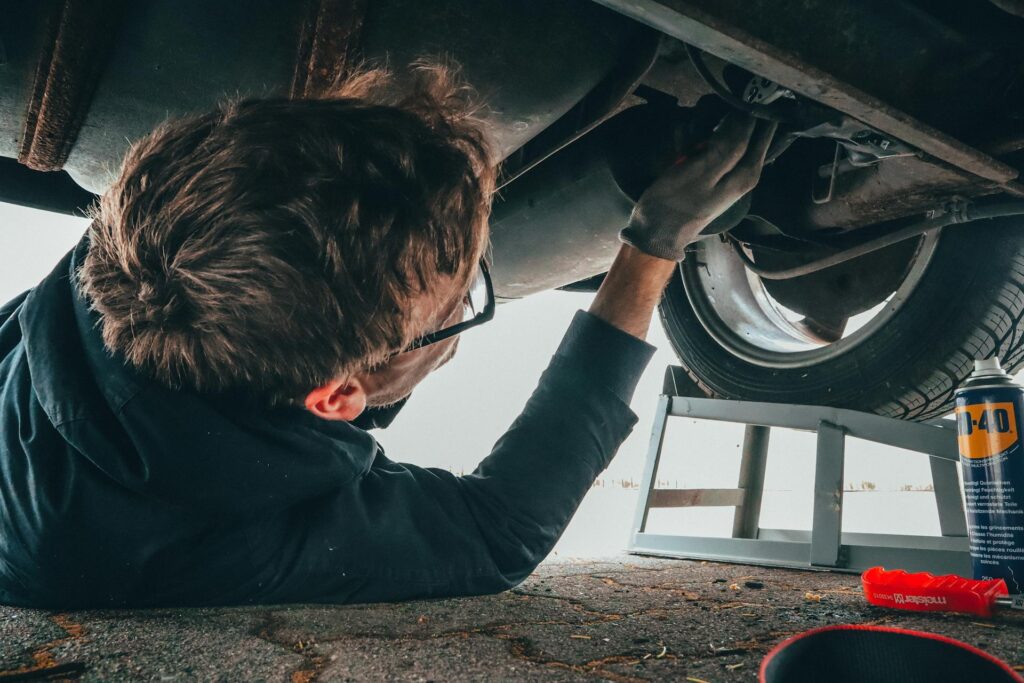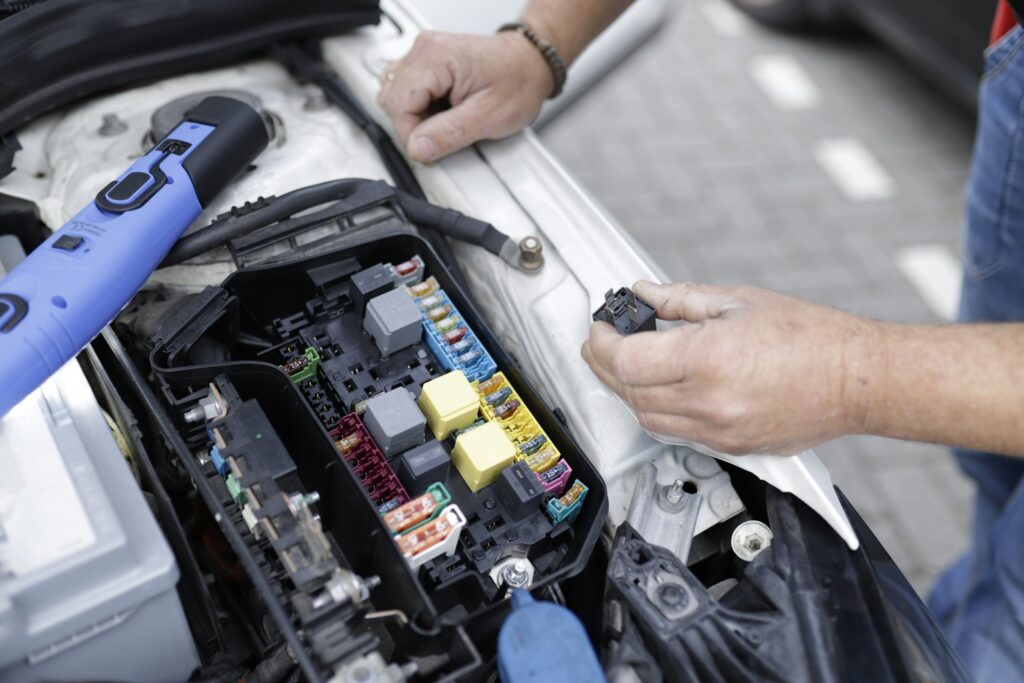Your suspension does more than keep the ride smooth. It keeps you safe and in control. If your car feels off, bouncy, or just not quite right, it could be due to car suspension problems.
Ignoring the early signs can lead to tire wear, poor handling, and higher repair costs. Spotting issues early helps protect both your wallet and your ride.
Common Signs of Car Suspension Problems
Here are the most frequent red flags that your suspension needs attention. Watch for these before things get worse.
1. Bumpy Ride Causes
One of the most obvious symptoms of bad car suspension is a bumpy or harsh ride. If every pothole feels like a crater or the car keeps bouncing after a speed bump, your shocks and struts may be worn out.
These key suspension components absorb road impact. Once they fade, comfort and handling both take a hit.
Try the bounce test. Push down firmly on each corner. If the car bounces more than 2–3 times, it’s time to inspect your suspension.
2. Clunking Sound When Driving
That bad suspension noise you hear when turning or going over bumps? It’s not just annoying. It could point to failing control arms, worn bushings, or broken mounts. These reduce the ability of your suspension to hold the tires in place, especially over rough terrain.
Listen during cold starts or when turning into driveways. Clunking that repeats could mean a joint or bushing is shot.
3. Uneven Tire Wear
Take a close look at your tires. If you see uneven tire wear, the suspension may be throwing off your wheel alignment. Misalignment or failing shocks cause the tires to lose even contact with the road.
Run your hand over the tread. If it feels wavy, feathered, or flat-spotted, there’s likely an alignment or shock issue.
While you’re checking your tires, check out 5 Easy Seasonal Maintenance Tasks for Trucks to keep your vehicle in shape year-round.
4. Steering Feels Loose While Driving
If the steering feels loose or the car drifts even on straight roads, suspension wear is likely affecting your control. This can come from worn tie rods, ball joints, or bushings. These are all key suspension components responsible for stable steering.
Suspension Inspection Checklist:
- Wandering while driving straight
- Oversteering in turns
- Constant steering correction
Check steering play by turning the wheel left and right while parked. If there’s excessive movement before the wheels respond, you likely have a worn component.
5. Body Roll and Nose Dives
Does your car lean into turns or dip forward when braking? These are signs of body roll and nose dive, caused by worn shocks or struts failing to control weight transfer. These problems can increase braking distance and reduce control during emergency maneuvers.
Take turns at a normal pace. If the vehicle sways more than usual, your stabilizer bar bushings or shocks may be worn.
6. When One Side Sits Lower
If your car leans to one side while parked on a flat surface, a broken spring or failed shock could be the cause. This puts strain on the rest of the system and affects everything from handling to tire tread wear.
Measure the height from the ground to each fender. A difference of over ½ inch usually means a suspension issue.
Suspension Repair Cost: What to Expect
Fixing suspension issues in cars can be costly, but ignoring them costs more. Here’s a quick breakdown of what common fixes might run:
| Repair Type | Estimated Cost (Parts & Labor) |
|---|---|
| Shock/Strut Replacement | $400–$1,000 |
| Control Arm Replacement | $300–$750 |
| Alignment After Suspension | $80–$200 |
| Full Suspension Overhaul | $1,500+ |
Always get an alignment after replacing suspension parts, even if your car “feels fine.” It protects your investment and keeps tire wear in check.
Stay Ahead of the Bumps
Catching car suspension problems early means safer drives, fewer surprises, and better control. If you hear clunks, feel extra bounce, or notice weird tire wear, don’t wait.
A quick inspection today can prevent costly repairs tomorrow. And keep your truck or car riding just the way it should.



